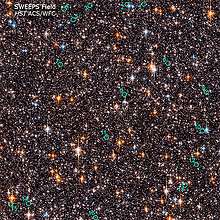MINERVA-Australis
MINERVA-Australis is a forthcoming dedicated exoplanet observatory[1], under construction at the University of Southern Queensland, in Queensland, Australia. The facility is being built at USQ's Mt. Kent Observatory, with first light due in quarter two 2018.
The facility is based on, and being built in partnership with, the MINiature Exoplanet Radial Velocity Array (MINERVA)[2], a northern hemisphere exoplanet facility located at the U.S. Fred Lawrence Whipple Observatory at Mt. Hopkins, Arizona. MINERVA-Australis will be used to perform follow-up and characterisation observations of exoplanets discovered by the forthcoming Transiting Exoplanet Survey Satellite, TESS, which was launched in April, 2018.
The project's principal investigator is USQ Astronomer Rob Wittenmyer.
Science Objectives
The primary mission of MINERVA-Australis is to support observations carried out by the NASA TESS spacecraft, providing dedicated follow-up and characterisation of newly discovered exoplanets. During commissioning, the facility will be used to pursue targets of opportunity, and to carry out work extending the baseline of the Anglo-Australian Planet Search program. MINERVA-Australis will allow researchers to obtain precise radial velocity observations for target stars, enabling the masses of planets discovered by the TESS spacecraft to be directly measured.
In addition to providing high precision velocity measurements, MINERVA-Australis will also offer high-cadence photometric observations. This will facilitate direct follow-up transit observations of TESS candidate planets (particularly those in fields from which TESS has moved on). It will also enable the observation of occultation events and other transient targets-of-opportunity.
The facility
MINERVA-Australis will consist of six PlaneWave CDK700 telescopes[3]. These 0.7 m telescopes have two ports, allowing each to be used for either spectroscopic or photometric observations. Each telescope will sit in its own automated clam-shell Astrohaven dome[4], distributed in an approximate semi-circle around the main observatory building.
Photometric work will be carried out using Andor cameras[5], with 2k x 2k back illuminated CCDs with 15 µm pixels. These cameras offer an effective field of view > 20'.
The six telescopes will be connected by optical fibre to a stabilised, R = 75,000 echelle spectrograph with an iodine cell, designed by KiwiStar Optics.
References
- ↑ Details of funding for the MINERVA-Australis project, from the Australian Research Council.
- ↑ The homepage for MINERVA, a dedicated northern hemisphere exoplanet observatory.
- ↑ Technical specifications for the PlaneWave CDK700 telescopes, six of which will make up the MINERVA-Australis telescope array.
- ↑ Details of Astrohaven's 12' domes. MINERVA-Australis will use six of the slightly larger, 12.5' domes to house its six telescopes
- ↑ Details of the Andor iKon-L 936 camera, to be used by MINERVA-Australis.

